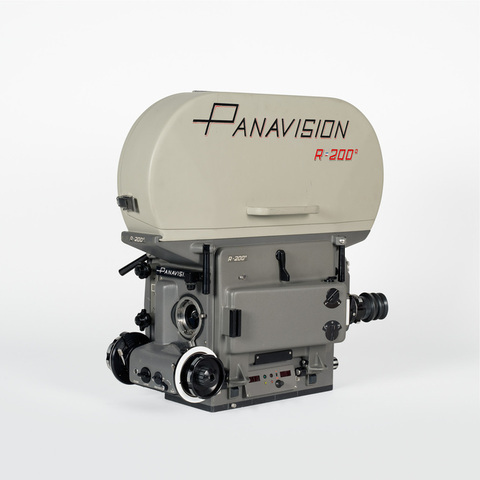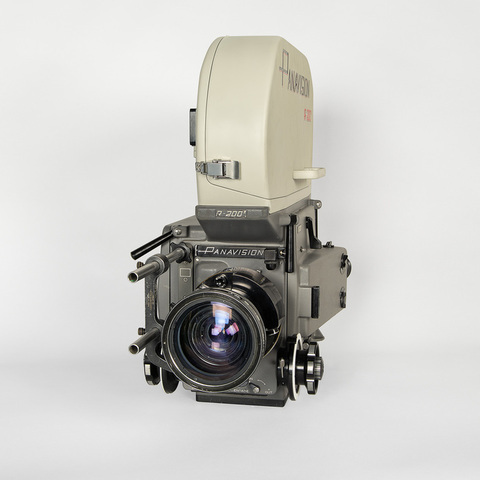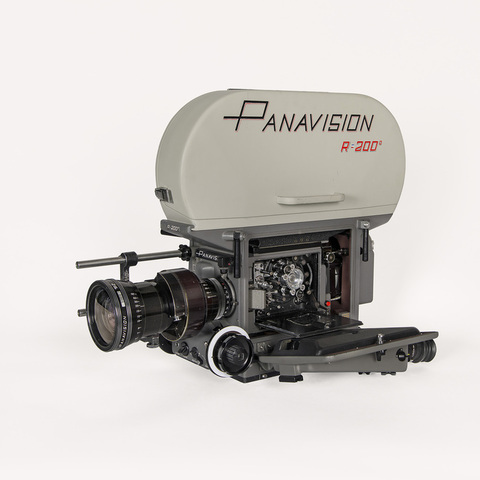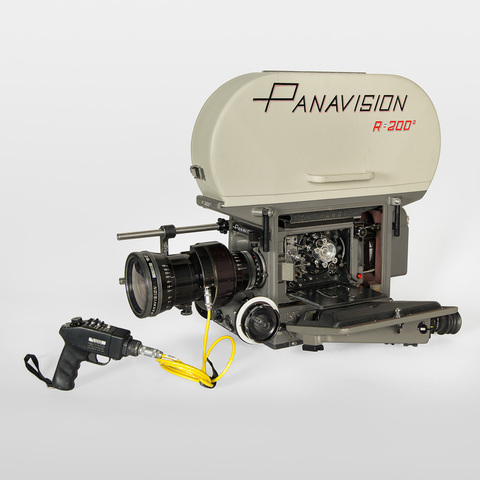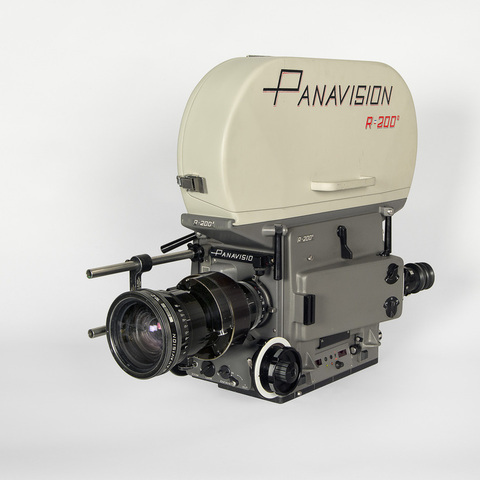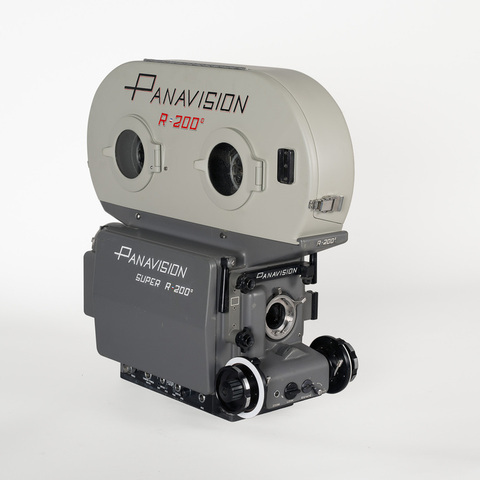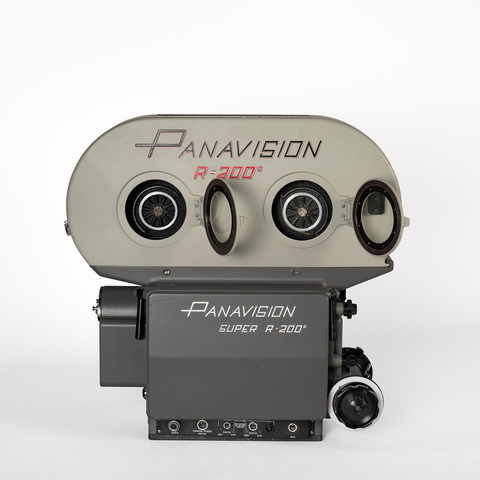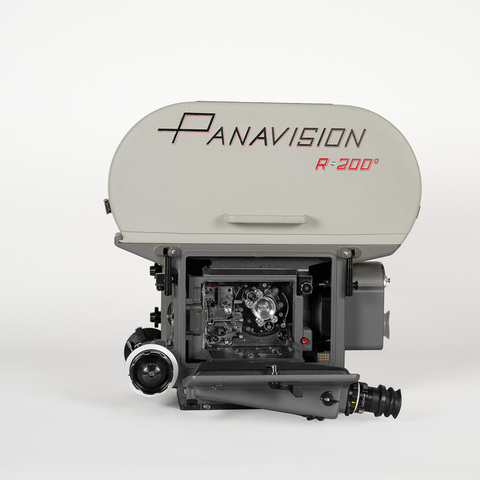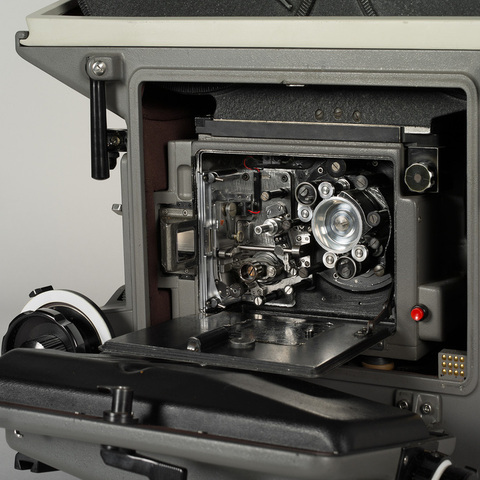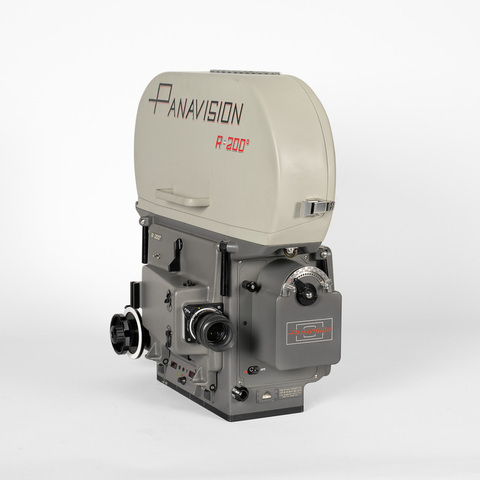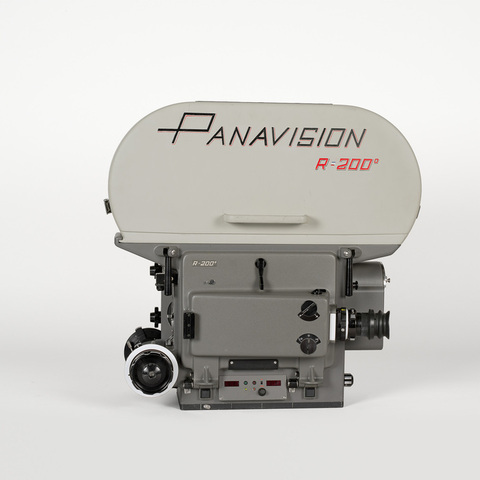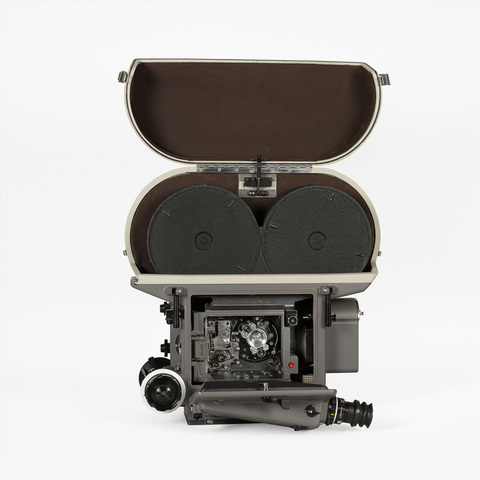Caméra film 35 mm
Fiche détaillée
Type de l'appareil
caméra auto-blimpée ; entraînement du film 35 mm par deux griffes et contre-griffes ; un débiteur denté ; obturateur variable ; viseur reflex avec désanamorphoseur intégré ; variateur de vitesse ; magasin débiteur et récepteur 120 m. ; poignées de portage ; crochet pour décamètre ; objectif zoom 20-120 mm ; pistolet Electronic Zoom Control
Auteurs
Informations non disponibles
Fabricants
Panavision Inc.
Los Angeles, California
Utilisateurs
Informations non disponibles
Distributeurs
Panavision Inc.
Los Angeles, California
Sujet du modèle
Informations non disponibles
Objectif
zoom 20-120 mm Ser. n° Z 6-19 Panavision
Taille de l'objet
Ouvert :
Informations non disponibles
Fermé :
Longueur : 64.5 cm
Largeur : 30.5 cm
Hauteur : 63 cm
Diamètre :
Informations non disponibles
Taille de la boîte de transport
Informations non disponibles
Remarques
Marques : "Panavision R-200°" ; "Mfd by and Property of Panavision Los Angeles Calf. USA Ser. n° SPSR-167".
"The PSR (Panavision Silent Reflex) camera, which had been the trusty, highly popular work-house studio camera, was over-shadowed when the Panaflex camera debuted in 1972, although it continued to be used productively in the filming of television series. Panavision realized that the PSR would produce excellent images for many years to come - and at low cost - if it were redesigned, lightened, and throughfully updated. The Super PSR transformation process reduced the weight of the standard PSR by 12 ibs., and its silhouette by 6 inches. The bulky, side-mounted 36 volt Panaspeed motor and its blimp were replaced by a much smaller and lighter 24 volt motor mounted to the rear of the camera, further reducing camera noise. The motor drive operates directly off of the shutter shaft. Digital footage counter and frame-rate readouts (the same as those on the Panaflex) have been located on the side of the camera for easy observation by the Assistant Cameraman. An electronic inching device advances the movement and can be used by the Assistant to check the threading for correct loop lenght after a reload. The Super PSR camera now stops with the mirror shutter in the "open" position. At the request of Universal Studios, a dimpling device (reverently called the "Panapunch") can be supplied as an option on the Super PSR. By simply pushing a button, the assistant can dimple appropriate takes so that only print takes are processed, with considerable savings in lab fees. A video assist, usable with either the rotating mirror or pellicle, is now integrated into the optical system. A monitor on the side of the camera provides instant replay. Matte boxes and other Panaflex accessories, including a larger version of the Panahead, are fully compatible with our updated Super PSR" (Notice The Super PSR, Tarzana, Panavision, 1983).
